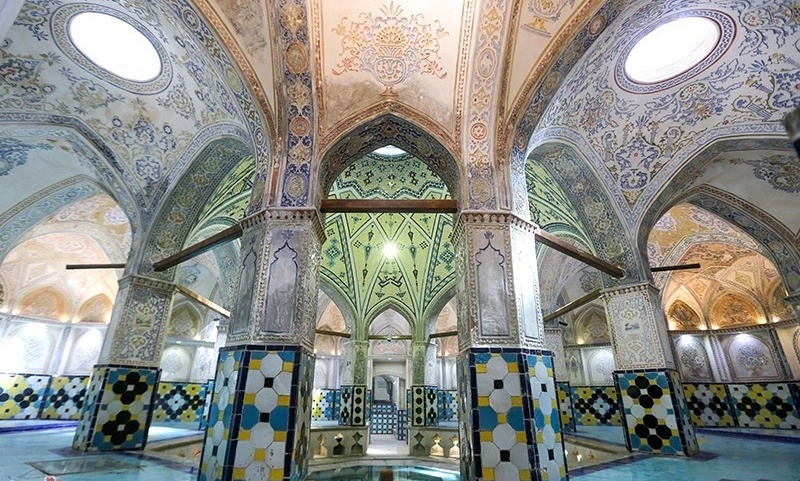SAEDNEWS: Sultan Amir Ahmad Bathhouse (Hammam-e Soltan Amir-Ahmad), also known as the Qasemi Bathhouse, is a traditional public bathhouse in Iran's central city of Kashan, dating back to the 16th century.

The Sultan Amir Ahmad Bathhouse (Hammam-e Soltan Amir-Ahmad), also known as the Qasemi Bathhouse, is a traditional public bath located in the historic city of Kashan, in central Iran. Its origins date back to the 16th century.
While some evidence suggests that the bathhouse was first built during the Seljuk dynasty, many historians believe that the structure we see today was constructed under the Qajar kings on the ruins of an earlier bathhouse.

The bathhouse is a unique example of Persian architecture and decorative art.
Situated in one of Kashan’s historic neighborhoods, it is easily accessible from several other notable attractions.
One of its most remarkable features is the rooftop—a beautifully artistic section of the bathhouse that draws photographers year-round.




Adorned with intricate turquoise and gold tiles, the Sultan Amir Ahmad Bathhouse exudes a quiet, meditative atmosphere, reminiscent of its past as a central public gathering space.
The 16th-century bathhouse, named after a sultan buried in a nearby mausoleum, features an octagonal dressing area (Sarbineh) and a hot bathing hall (Garm-Khane). It has undergone restoration twice: following the 1778 earthquake and again in 1996.
Visitors can take self-guided tours of the bathhouse and climb to the rooftop to admire numerous small domes and scenic views of the surrounding area.








Historically, the bathhouse also served as a traditional teahouse. Today, it functions as a museum and has been registered as a national heritage site by Iran’s Cultural Heritage Department since 1956.
Nearby, travelers can explore other historical landmarks such as the Agha Bozorg Mosque and the Abbasiha, Tabatabaei, and Boroujerdiha historic houses.

